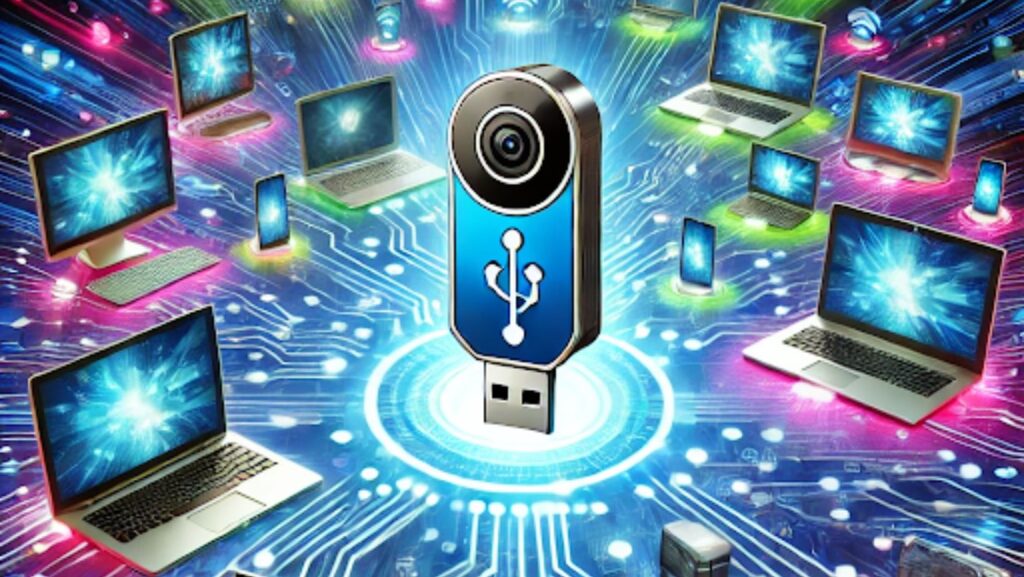
In today’s digital landscape, USB cameras have transcended their original purpose of video calls, becoming versatile tools in both security and professional settings. These compact devices now play a crucial role in remote surveillance, allowing users to monitor environments in real-time, and in virtual meetings, where they facilitate seamless communication. As technology advances, the integration of USB cameras into various systems has made them a cost-effective and accessible option for those seeking enhanced connectivity and monitoring capabilities.
The rise of remote work and the increasing demand for online collaboration have highlighted the significance of reliable video communication tools. USB cameras, with their user-friendly design and widespread availability, have become essential for enabling virtual interactions. Nevertheless, their application comes with its own set of challenges. Recognizing the advantages and limitations of these devices is crucial for maximizing their potential, whether you’re using them for personal security or professional purposes.
In this discussion, we will delve into the various uses of USB cameras, particularly emphasizing their role in remote surveillance and online collaboration. For those looking to share webcam over lan for enhanced local network security or to streamline their online meetings, it’s important to grasp both the practical benefits and the challenges associated with these devices. By gaining a comprehensive understanding, you can make informed decisions that align with your specific needs.
Comprehensive guide to setting up a USB camera for remote surveillance
In an era where security and remote monitoring are increasingly important, utilizing a USB camera for surveillance is a practical solution that doesn’t require extensive technical expertise or costly equipment. Whether you need to monitor your home, office, or another location, a USB camera can serve as an effective tool for keeping an eye on your surroundings from a distance. By following a clear, step-by-step process, you can transform a standard USB camera into a reliable component of your security setup.
To get started with using a USB camera for remote surveillance, it’s essential to understand the basic setup process. Below is a detailed guide that will walk you through each step, from choosing the right camera to configuring it for remote access. By thoroughly planning and paying close attention to details, you can guarantee that your surveillance system operates efficiently and securely.
- Choose the right USB camera: begin by selecting a USB camera that meets your surveillance needs. Consider factors such as resolution, frame rate, and field of view. A camera with high-definition capabilities and wide-angle lenses is ideal for covering larger areas.
- Install the necessary software: most USB cameras come with proprietary software or drivers that need to be installed on your computer. This software typically allows you to control the camera, adjust settings, and manage the video feed. Make sure the software works seamlessly with your operating system.
- Connect the USB camera to your computer: plug the USB camera into an available USB port on your computer. The device should be automatically detected by the system, which will then install the necessary drivers. If instructed, proceed with the on-screen steps to finish the installation process.
- Configure the camera settings: open the camera software and configure the settings according to your surveillance needs. Adjust the resolution, frame rate, and focus to ensure optimal video quality. You may also want to enable motion detection if the software supports this feature.
- Set up remote access: to monitor the camera feed remotely, you’ll need to configure remote access. This typically involves setting up a static IP address or using dynamic DNS (DDNS) services to connect to the camera from an external network. Follow the instructions provided by your software or router manufacturer to enable remote access.
- Test the connection: once remote access is configured, test the connection by accessing the camera feed from another device, such as a smartphone or another computer. Ensure that the video stream is clear and that you can control the camera remotely.
- Secure your setup: protect your surveillance system by implementing security measures such as strong passwords and encryption. This will aid in blocking any unauthorized access to your camera’s feed. Consistently keep the software and firmware up to date to address any potential security flaws.

- Position the camera: place the USB camera in a strategic location that provides a clear view of the area you want to monitor. Make sure it’s mounted at a height that reduces the risk of tampering and that the cables are neatly secured to avoid accidental disconnections.
- Monitor and maintain: regularly check the camera feed to ensure that everything is working as expected. Perform routine maintenance, such as cleaning the camera lens and checking the connection, to ensure consistent performance.
Setting up a USB camera for remote surveillance is a straightforward process that, when done correctly, provides a robust solution for monitoring your space. Adhering to these guidelines will help you create a surveillance system that is both reliable and secure. Consistent monitoring and upkeep will maintain your system’s performance, ensuring you feel secure in your environment.
Evaluating the pros and cons of USB cameras for remote work and online meetings
As remote work and virtual meetings have become integral to modern professional life, the tools we use to stay connected are more important than ever. USB cameras, due to their ease of use and widespread availability, have become a popular choice for many individuals and organizations. As with any technology, they offer a mix of benefits and drawbacks. Grasping these aspects will enable you to make well-informed decisions on whether a USB camera suits your remote work or virtual meeting requirements.
| Advantages | Disadvantages |
| Affordability: USB cameras are generally more affordable than other types of cameras, making them accessible for a wide range of users. | Limited features: many USB cameras offer basic features and may lack advanced options like background noise cancellation or virtual backgrounds. |
| Ease of installation: most USB cameras are plug-and-play, requiring minimal setup and no additional software, making them user-friendly. | Image quality: while many USB cameras offer HD resolution, their image quality may still be inferior to more expensive options like DSLR cameras or professional webcams. |
| Portability: USB cameras are compact and lightweight, making them easy to transport and use with multiple devices. | Dependence on USB ports: they require an available USB port, which can be a limitation if your device has limited ports or if you need to connect multiple peripherals. |
| Wide compatibility: USB cameras are compatible with most operating systems and video conferencing software, ensuring seamless integration into existing setups. | Limited field of view: the field of view on many USB cameras is narrower compared to high-end webcams, which can be restrictive for group meetings. |
| Reliability: USB cameras tend to be reliable and stable, with fewer connectivity issues compared to wireless cameras. | Audio quality: many USB cameras do not include built-in microphones, or if they do, the audio quality may be poor, necessitating the use of a separate microphone. |
| Flexibility in use: they can be easily moved or adjusted, allowing for quick changes in setup depending on the meeting or work environment. | Security concerns: without proper security measures, USB cameras can be vulnerable to hacking or unauthorized access, posing a privacy risk. |
USB cameras provide several advantages that make them appealing for remote work and virtual meetings, especially due to their affordability, user-friendliness, and broad compatibility.

However, they also have some limitations, such as image quality and potential security risks, that should be considered. By weighing these pros and cons, you can determine whether a USB camera meets your specific needs or if another type of camera might be more suitable for your setup.
Concluding insights on the versatility of USB cameras for modern needs
USB cameras have proven to be versatile tools that cater to a variety of needs, from enhancing security through remote surveillance to facilitating effective communication in online meetings. Their affordability, ease of use, and wide compatibility make them an attractive option for both personal and professional applications. Yet, as with any technology, it’s crucial to be aware of both their strengths and limitations to make the best possible decision.
For those looking to use a USB camera for remote surveillance, the process is straightforward and can be highly effective with the right setup. By carefully selecting the camera, configuring settings, and securing the system, users can create a robust monitoring solution that provides peace of mind.
On the other hand, when considering USB cameras for remote work and virtual collaboration, it’s important to weigh the pros and cons. While these cameras offer significant advantages such as portability and reliability, they may fall short in areas like image quality and advanced features. Understanding these trade-offs is crucial in determining whether a USB camera aligns with your specific requirements.
USB cameras are valuable tools that can serve a wide range of functions in today’s digital world. Whether for security or communication, they offer a practical solution that is accessible to most users. By understanding their capabilities and potential drawbacks, you can optimize their use and ensure they meet your unique needs, whether it’s for keeping your property secure or staying connected in a virtual environment.


